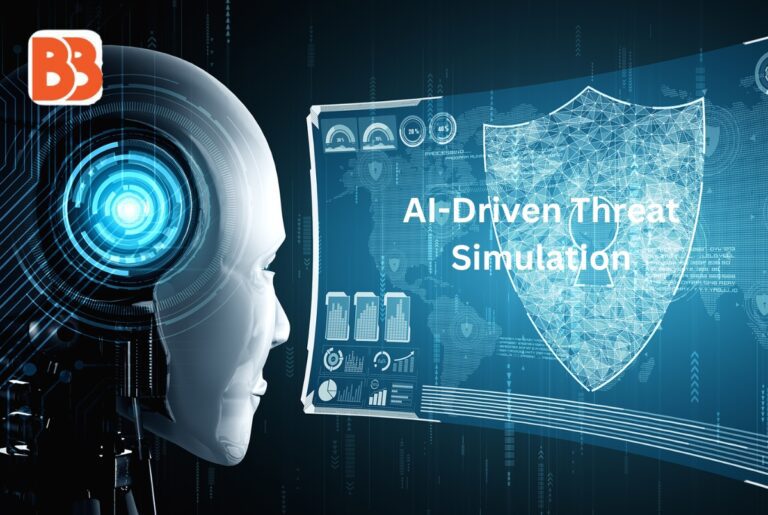One of the most promising solutions is AI-driven threat simulation, which uses artificial intelligence to predict and prepare for potential cyberattacks. It powers businesses, connects people, and makes life more convenient. But with all these advancements come new dangers cyberattacks. These attacks can steal information, disrupt systems, and cause chaos. As cyber threats become more complex, the need for smarter ways to defend against them grows. Let’s have a glance at this article to explain how this technology works, why it’s important, and how it can make our digital world safer.
The Growing Problem of Cyber Threats
Cyberattacks have become a major concern for governments, businesses, and individuals alike. Hackers are getting smarter and finding new ways to exploit weaknesses in computer systems. Some common types of cyber threats include:
- Phishing: Fake emails or messages trick people into revealing personal information.
- Ransomware: Hackers lock computer systems and demand payment to unlock them.
- Distributed Denial of Service (DDoS) Attacks: Overloading a website with traffic to make it crash.
- Advanced Persistent Threats (APTs): Long-term attacks that slowly steal data without being noticed.
Traditional cybersecurity measures, like firewalls and antivirus software, are no longer enough to stop these sophisticated attacks. That’s where AI-driven threat simulation comes in.
How It Works
- Data Collection: AI systems analyze data from a variety of sources, including network activity, past attacks, and threat intelligence reports. This helps them understand the current security landscape.
- Simulating Attacks: The AI creates realistic attack scenarios, such as a phishing attempt or malware infection. These simulations test how well a system can defend itself.
- Finding Vulnerabilities: By running these fake attacks, the AI identifies gaps in security, like unpatched software, weak passwords, or misconfigured systems.
- Predicting Future Threats: Using patterns from past attacks, the AI predicts new types of cyber threats that could emerge, allowing organizations to prepare in advance.
What Is AI-Driven Threat Simulation?
AI-driven threat simulation is a powerful tool designed to predict and prepare for cyberattacks before they occur, giving organizations a proactive edge in cybersecurity. This innovative approach leverages artificial intelligence (AI) to mimic the tactics and strategies used by hackers, simulating real-world attack scenarios. By acting as the “bad guy,” the AI identifies vulnerabilities in an organization’s systems, such as weak passwords, outdated software, or misconfigured settings.You can read more about “Deepfake Detection and Mitigation: A Generative AI Approach“.These simulated attacks allow organizations to understand where their defenses are failing and pinpoint critical areas needing improvement.
Why AI-Driven Threat Simulation Is Important
Cybersecurity is no longer about reacting to attacks after they happen it’s about preventing them before they start. AI-driven threat simulation offers several advantages that make it a powerful tool for this purpose.
- Staying Ahead of Hackers: Hackers are always coming up with new tricks. AI learns from every simulation and adapts to new tactics. This helps organizations stay one step ahead of cybercriminals.
- Saving Time and Money: Manual testing for vulnerabilities is slow and expensive. AI automates the process, saving time and resources while delivering faster results.
- Reducing Human Error: Many cyberattacks succeed because of human mistakes, like clicking on suspicious links. AI-driven simulations help identify these weaknesses and provide targeted training to reduce errors.
- Continuous Protection: Cyber threats are constantly changing. Unlike traditional security measures that require regular updates, AI systems are always learning and evolving to keep up with the latest threats.
Real-World Applications of AI-Driven Threat Simulation
AI-driven threat simulation is being used across different industries to strengthen cybersecurity. Here are a few examples:
- Banking and Finance: Banks and financial institutions handle sensitive information like account details and credit card numbers. They use AI simulations to detect phishing attacks and secure online transactions.
- Healthcare: Hospitals store patient records and other confidential data. AI helps protect these systems from ransomware attacks and ensures that medical devices connected to the internet are safe.
- Government Agencies: Government systems are prime targets for cyberattacks. AI-driven simulations help safeguard critical infrastructure, such as power grids and transportation networks.
- Online Retail: E-commerce platforms process millions of transactions daily. AI ensures that these systems are secure, protecting both businesses and customers from fraud.
The Future of AI-Driven Threat Simulation
AI-driven threat simulation is still evolving, and its potential is enormous. Here’s what the future might look like:
- Smarter Systems: As AI continues to improve, simulations will become more accurate and realistic, making it even harder for hackers to find loopholes.
- Predicting Unknown Threats: Future AI models may be able to predict entirely new types of cyberattacks, giving organizations a significant head starts in preparing defenses.
- Widespread Adoption: As the technology becomes more affordable, even small businesses will be able to use AI-driven threat simulation to secure their systems.
- Global Collaboration: AI could enable organizations around the world to share insights about cyber threats, creating a united front against attackers.
Conclusion
AI-driven threat simulation is revolutionizing cybersecurity by helping organizations predict and prevent cyberattacks. It provides a proactive approach to identifying vulnerabilities, strengthening defenses, and staying ahead of cybercriminals. While challenges like cost and complexity exist, the benefits far outweigh the drawbacks. As the technology continues to advance, it will play a crucial role in protecting our digital future. Whether you’re a business owner, an IT professional, or just someone who uses the internet daily, AI-driven threat simulation is shaping a safer world for all of us.
